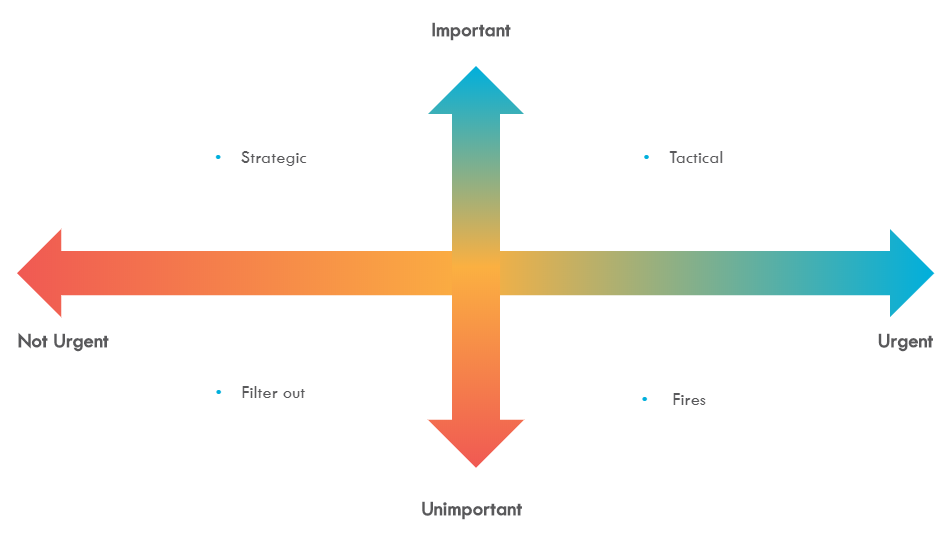Let’s review the Issues List
During your Intensity Day, this tool will be displayed throughout the entire session. Here you’ll find tangential, but important, items that are not on the agenda. For instance, areas of disagreement or topics that require further analysis are tracked on the Issues List.
Condensing your Issues List
A long to-do list with duplications makes it almost impossible to get through, so it’s important that items are unique. Editing your list also ensures that multiple-related issues are condensed into a more thorough single issue. By trimming down list items, it makes the overall list more manageable, allowing your team to be more productive.
Categorizing your Issues List
Now you have your condensed list, but what items are tactical and which are strategic? Here you can use a simple method by author Stephen Covey, described in his book The 7 Habits of Highly Effective People: Powerful Lessons in Personal Change. Using Covey’s method, issues belong in four different quadrants: Important/Urgent, Important/Not Urgent, Unimportant/Urgent, Unimportant/Not Urgent.

Why is Covey’s method so ingenious?
You can easily see your list become even more manageable. Items that are Unimportant and Not Urgent can be ignored, leaving you more time for the items that fall in the other three quadrants. Items that are Unimportant but Urgent are more likely areas of growth, where teams can improve, and can be minimized. Minimizing these items does not mean ignore, though; there should be follow-up when it comes to growth management, but it isn’t considered a top-of-the-list item. Urgent and Unimportant issues could also be fires that the team is fighting because of poor process; too many of these and there’s no time to improve the process that might eliminate some of them. Important but Not Urgent list items are long-term and strategic, usually tabled for your strategic reviews. Lastly, Important and Urgent items head to the top of the list with issues that need discussion and resolve in the tactical meetings.
An Issues List needn’t be overwhelming or confusing. What first might feel like too many tasks for one team to complete, by condensing and categorizing you’re left with a manageable list that has a clear direction. Condense, categorize, and keep moving forward.

